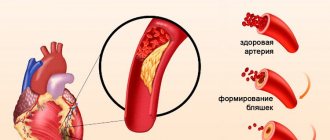Author: Sozinova A.V., obstetrician-gynecologist, has been in continuous practice since 2001. March, 2021.
Fertilization (fusion of male and female sex gametes) is a pregnancy that has not yet occurred. Pregnancy is considered to have occurred only after completion of implantation - the introduction of a fertilized egg into the uterine mucosa.
The interval from the moment of conception to the attachment of a fertilized egg in the endometrium is called biochemical pregnancy and cannot be physically felt by a woman or confirmed by additional research methods.
What is implantation bleeding
Implantation bleeding during pregnancy is a condition caused by the attachment of a fertilized egg to the inner lining of the uterus. The inner shell is a loose tissue with a developed network of blood vessels. Rich blood circulation is necessary for the successful gestation of the fetus and its life support throughout the 9 months of pregnancy.
The process of implantation after conception is accompanied by tissue destruction and damage to these vessels, that is, it is practically microtrauma. If the damage is minor, the vessels remain intact and implantation bleeding does not occur. When the vessels are damaged, bleeding appears. Within a couple of days it stops, as the coagulation system is activated and the integrity of the blood vessels is restored.
Implantation bleeding during pregnancy is a natural process. But it is important to know its signs in order to distinguish it from pathological discharge, which can lead to complications.
Changes in the female body
The attachment of a fertilized egg becomes a serious stress for the female body. From the first minutes of conception, all biochemical processes are actively rearranged to suit the new “interesting position”. From this moment, progesterone begins to be produced - a hormone that stops menstruation and ensures further growth of the endometrium. This is why pain appears, as during menstruation during implantation.
During the period of attachment of a fertilized egg, a woman’s immunity sharply decreases. This is necessary so that the female body does not perceive the embryo as a foreign body. Otherwise, immune cells begin to produce special antibodies, which can cause spontaneous abortion.
Most often, with successful fertilization, implantation bleeding appears 3-8 days before the expected period or on the first day of menstruation.
But it must be taken into account that the secretion can also be released during an ectopic pregnancy. In this case, pain and other unpleasant symptoms appear more pronounced than during normal pregnancy. The only way to reliably determine an ectopic pregnancy is ultrasound.
Symptoms of implantation bleeding
The condition occurs without pronounced symptoms. The discharge is light pink or cream in color, without an unpleasant odor and in small quantities. Lasts no more than 2 days.
At this moment, a woman may feel pulsation in the lower abdomen, slight soreness, nagging or aching pain. The state of health is usually not affected, but there may be slight malaise, weakness, loss of strength, drowsiness, nausea, which do not affect performance and do not interfere with leading a normal life.
There is another sign - a change in basal temperature. If a patient is planning a pregnancy and measures her temperature daily, then during ovulation she will notice an increase in the values on the graph. When the fertilized egg attaches, the numbers, on the contrary, decrease - this period is called “implantation retraction.” After a short-term decrease, the temperature rises again and remains this way for the entire period due to progesterone.
Of course, when determining pregnancy, one cannot rely only on the values of basal temperature, but its characteristic jumps, coupled with slight bleeding, allows one to suspect an “interesting situation.”
Control fluctuations in basal temperature
If you are planning to conceive, chart your temperature. Before the date of ovulation, it usually does not exceed 36 degrees. At the moment the egg is released, the indicator increases by approximately one division.
If the formation of a zygote does not occur, the temperature will return to its previous level. And in the event of the birth of a new life, the value will remain at 37 .
How is it different from menstruation?
The cause of bleeding can be determined by several signs:
- Volume of discharge. During menstruation, the discharge is copious, its duration is from 3 to 5 - 6 days. First there is spotting, then intense bleeding for 4 days, after which there is scanty discharge again. With implantation bleeding, the discharge is immediately scanty and goes away within a couple of days;
- The onset depends on the day of the menstrual cycle - menstruation most often begins on days 28 - 30, implantation bleeding - earlier, a few days after ovulation;
- The color of the discharge is dark red during the menstrual cycle, and during implantation it is pinkish discharge or mucus streaked with blood;
- Menstruation is characterized by PMS - premenstrual syndrome, which is accompanied by increased emotionality, irritability, tearfulness, and malaise. It begins a few days before the cycle, after the appearance of discharge, the symptoms gradually fade away. With implantation bleeding during pregnancy, on the contrary, the intensity of complaints increases every day and is accompanied by symptoms of toxicosis - nausea, dizziness, fluctuations in blood pressure.
When to see a doctor
Consultation with a gynecologist is not required if the patient is sure that this is menstruation and not uterine bleeding. In other cases, contacting an expert will not be superfluous.
When to see a doctor:
- the appearance of symptoms indicating female pathology;
- the duration of “implantation bleeding” is more than 3-4 days;
- delay 3-4 days;
- absence of implantation bleeding when menstruation is delayed.
Normally, such bleeding is not treated, but is an early sign of a progressing pregnancy. If something goes wrong, complex therapy may be required according to indications.
How to determine implantation bleeding
To find out whether it is implantation bleeding or something else, you need to know the features.
You should pay attention to the following characteristics:
- discharge does not coincide with the cycle and begins on days 22 - 27 - the timing depends on the length of the cycle (for some it is 28 days, for others it is 30), but always before menstruation;
- before the appearance of discharge, there may be pain in the abdomen - mild, pulling or stabbing in nature;
- lasts no more than 2 days;
- discharge is pinkish, not strong, spotting;
- changes occur in the mammary glands - the nipples acquire a dark shade, the glands become painful, increase in size due to the proliferation of glandular tissue;
- changes in hormonal levels are accompanied by emotional instability, tearfulness, and frequent urination.
What does it look like
Since the amount of discharge is small, implantation bleeding during pregnancy may go unnoticed. A woman perceives pain and weakness as a symptom of PMS; she will not notice changes in basal temperature if she does not check it or measures it irregularly.
On underwear, the discharge looks like spotting or patches of pink clots.
Implantation bleeding is possible only after conception, so it is preceded by ovulation. Some women also feel ovulation physically. They describe their sensations as pain on the left or right in the lower abdomen (depending on in which ovary the follicle has matured). After ovulation, sexual intercourse without contraception should take place. Only a combination of all these factors allows one to suspect conception and subsequent implantation bleeding.
Heartburn
Hormones can cause the valve between the stomach and esophagus to relax. This allows stomach acid to leak out, causing heartburn.
Before using medications for heartburn - so-called antacids that reduce the acidity of gastric juice by neutralizing hydrochloric acid - be sure to consult your doctor, as some of the antacids can negatively affect the health of the unborn baby.
Clue
- Prevent pregnancy-related heartburn by eating in several small meals instead of large ones
- After eating, try to sit upright for at least an hour to give the food more time to digest
- If you need antacids, talk to your doctor about your safety and the safety of your child.
How many days after conception can it be
Implantation bleeding develops 4 to 5 days after conception.
The chronology of events is as follows:
- The release of the egg from the follicle occurs on days 14 - 16 of the cycle, sometimes later if a woman’s cycle is more than 28 days - everything is individual;
- within 3 days the egg is capable of fertilization;
- after conception, the fertilized egg begins to move along the fallopian tube towards the uterus;
- on days 4–5 after pregnancy, the fetus is implanted into the endometrium.
If a woman's periods come regularly, it is not difficult to find out what caused the discharge. Especially if a couple is planning a pregnancy, is not using protection and is making all the calculations.
There are no difficulties when carrying out IVF or using other types of assisted reproductive technologies. During in vitro fertilization, an embryo is implanted into the uterus; if the procedure is successful, implantation bleeding will begin within a few days.
During artificial insemination, sperm from a partner or donor is injected into the uterine cavity. In this case, the entire further process occurs naturally. That is, sperm must “get” to the egg and fertilize it. After which the fertilized egg begins to move through the cavity of the fallopian tubes towards the uterus. Implantation bleeding during pregnancy begins 4 to 5 days after insemination.
What will an ultrasound show for implantation bleeding?
When implantation bleeding occurs, the fetus is in the uterus. It is impossible to see the embryo on an ultrasound at this stage. The minimum period when an embryo can be detected is 3 weeks. Until this time, the fertilized egg is so small that even with a transvaginal examination it cannot be seen.
Therefore, there is no need to conduct an ultrasound and it is not prescribed. The study can be used as a diagnostic method when a woman has an irregular cycle and the cause of bleeding needs to be identified.
Implantation mechanism
In the process of moving towards the uterine cavity, the fertilized egg is intensively fragmented, gradually increasing the number of cells forming it and turning into a morula (from 16 to 32 cells) or a blastocyst.
The blastocyst is represented by two types of cells: embryoblast (future embryo) and trophoblast (precursor of the placenta).
The movement of the blastocyst into the fetal cavity occurs on average 5–6 days from the moment of fertilization. After the future embryo enters the uterus, the implantation process begins, which includes 2 stages:
1. Adhesion. The future embryo adheres to the surface layer of the uterine mucosa.
2. Invasion. Next, it is directly introduced into the endometrium. To carry out this process, special threads are formed, with the help of which the future embryo grows into the uterine mucosa. At the same time, certain substances are released from these villi that can dissolve the surface layer of the endometrium, resulting in the formation of a fossa called implantation. The embryo is immersed in this depression, and the damaged mucous membrane regenerates, completely hiding it in its thickness. The implantation process does not end there; the villi penetrate deeper into the uterine tissue, which is accompanied by the destruction of its blood vessels and the formation of lacunae filled with maternal blood. Through these lacunae, the embryo communicates with the maternal body (nutrients and oxygen are supplied to the embryo). After implantation has occurred, the pregnancy is considered successful, and the signs that appear in the woman are called doubtful or probable.
Photo: process of adhesion and invasion - formation of threads and ingrowth of the blastocyst into the endometrium
After ovulation
On average, implantation bleeding occurs on days 25 - 27, less often on days 29 - 31 of the cycle, a week or 2 - 4 days before menstruation.
Regarding ovulation, the timing is as follows. The fixation of a fertilized egg can occur:
- after 7 - 10 days - average terms, this is the most common option;
- after 6 - 7 days - early implantation, rare;
- later than 10 days - this is late implantation, more often occurs with artificial insemination.
Women expecting pregnancy wonder whether it is always possible to detect implantation bleeding, and whether it is always characterized by additional symptoms. Depending on the individual characteristics, the attachment of the embryo in some cases coincides with the first day of menstruation, especially if the girl has an irregular cycle.
To get answers to your questions, a pelvic ultrasound should be performed no earlier than 3 weeks later. An examination will allow you to make an accurate diagnosis.
Nausea and vomiting
Morning sickness usually occurs between 4 and 6 weeks and, despite its name, can occur not only in the morning, but at any time of the day or night. There is no scientific basis for what exactly causes nausea, but hormones are definitely involved.
During the first trimester of pregnancy, many women experience morning sickness, which can range from mild to moderate to severe. May become more intense towards the end of the first trimester and often subsides by the beginning of the second trimester.
Morning sickness is probably the most well-known early sign of pregnancy, but not every pregnant woman experiences it!
Also, some pregnant women change their taste preferences: they either crave or have an aversion to certain foods so much that even the thought of what was once a favorite dish can cause a gag reflex.
Some women experience vomiting, nausea, cravings and food aversions throughout their pregnancy. But in most cases, these symptoms decrease around 13-14 weeks of pregnancy.
Clue
- Keep a bag of saltine crackers by your bed and eat a few before you get up in the morning.
- Drink plenty of water and stay hydrated
- Call your doctor if you cannot keep liquid or food down in your stomach.
Be sure to eat a healthy diet to ensure you and your developing baby get the nutrients they need. You can seek advice on this from your doctor.
Duration of implantation bleeding
Bleeding usually lasts no more than 2 days. During this time, the integrity of the blood vessels is restored, and the discharge disappears.
How long the bleeding lasts depends on the individual characteristics of the body. With inflammatory processes in the uterine wall, the time frame may be delayed: the tissues are changed, the regenerative capabilities of the tissues are reduced.
Blood counts also matter. If the ability to clot is impaired, blood flows for a long time. This can happen when taking medications that thin the blood, such as acetylsalicylic acid.
In all cases, it is necessary to find the cause of the problem and eliminate it. If this is not done, chronic blood loss can lead to anemia, arterial hypotension, and cause the threat of miscarriage. Even if there is no threat, prolonged blood loss does not have the best effect on the baby’s development: he does not receive enough oxygen and nutrients, which in the future threatens with hypoxic complications and malnutrition.
Monitor your bowel movements
When the embryo attaches to the endometrium of the uterus, the expectant mother's hormonal system changes. Metabolism slows down, and maximum energy is devoted to the most important process - the development of the embryo. Because of this, peristalsis worsens, gas formation increases and stool upset occurs.
Diarrhea is a symptom of pregnancy, affecting one in four women.
Hormonal changes occur regardless of whether fertilization was done using IVF or natural methods. It can lead to changes in taste preferences, nausea and vomiting. If early toxicosis appears, you should temporarily avoid any foods that are not absorbed by the body.
Does implantation bleeding always happen?
Bleeding does not occur in all cases. Often it is simply not noticed, since the discharge is scanty. The presence or absence of this symptom is not a deviation. This is a feature of the body, just like hair or eye color, height and weight. The likelihood increases with multiple pregnancies.
What to do if there is implantation bleeding during pregnancy?
When you are sure that the cause is an “interesting situation” and you feel good, just lead a normal life. There is no need to run straight to the doctor or do an ultrasound - at this time the examination will be uninformative. There is also no need to take hemostatic agents or drugs to maintain pregnancy. But you can start taking folic acid to prevent abnormalities of the nervous system in your child, if you have not done so before.
Pay attention to lifestyle, nutrition, emotional state - eliminate all factors that could negatively affect the child:
- Give up bad habits - smoking and alcohol, do not forget about passive smoking and do not be in places where there is tobacco smoke;
- Review your diet - eat more fresh vegetables and fruits, herbs, fresh fish. Limit sweets, canned foods, and processed foods. If you are drawn to a certain “harmful” product, this may indicate a deficiency of some vitamin or microelement. In this case, you can replace one product with another. For example, one is drawn to sweets because of a lack of energy. The deficiency can be replaced with so-called “slow” carbohydrates, which are found in dried fruits - they do not cause a sharp jump in blood glucose;
- Establish a daily routine, get enough sleep and rest;
- Do not take any medications without a doctor’s prescription - even vitamins should be taken only when necessary, and an overdose of them is completely dangerous;
- Avoid physical strain, emotional turmoil, stress;
- Try to surround yourself with something that creates a good mood and pleases the eye.
If menstruation begins after some time after bleeding, you should consult a doctor immediately. This can occur when there is a threat of miscarriage. In this case, the symptoms gradually increase. It is necessary to take all measures to stop the bleeding and maintain the pregnancy. In most cases, inpatient treatment is indicated. Women who have already had a miscarriage or an unsuccessful IVF attempt should be especially careful.
There are other situations not related to pregnancy that are accompanied by bleeding. In these cases, specialist consultation, diagnosis and treatment are necessary.
When to go to the doctor
The first situation is that the discharge is profuse and does not stop for a long time. This may indicate various disorders: ectopic pregnancy, inflammatory diseases, cycle disorders, fibroids, endometriosis, cancer, endocrine diseases (thyroid). There will also be other symptoms:
- An ectopic pregnancy is accompanied by pain that gets worse every day. Complaints appear after a delay - after about 7 - 8 days. The period coincides with the implantation of the fertilized egg into the wall of the fallopian tube, and the pain is caused by stretching of the tube. If a woman takes the test, it will show a positive result, but the second line may be faint due to the low level of human chorionic gonadotropin compared to intrauterine pregnancy. The only possible treatment tactic is surgery;
- The inflammatory process is characterized by pain, which intensifies as the disease progresses. There may be a high temperature and purulent discharge. Gradually my health worsens. Medical care consists of bacteriological examination, isolation of the pathogen, and subsequent antibacterial treatment;
- Cycle disorders in young women, depending on the time of development of hormonal imbalance, manifest themselves in various symptoms. Characterized by weight fluctuations, headaches, surges in blood pressure, fatigue, weakness, sleep disturbances, deterioration in the condition of hair, nails, and skin. The condition requires consultation with a gynecologist, endocrinologist, and testing for sex hormones and thyroid hormones. Treatment consists of correcting hormonal levels;
- In premenopausal women, pregnancy can occur against the background of a cycle disorder, and therefore often goes unnoticed. Bleeding at the time of attachment of the egg to the wall of the uterus can also be confused with hormonal changes. A consultation with an obstetrician-gynecologist is necessary to assess the woman’s condition and determine the possibility of prolonging pregnancy;
- Endometriosis is characterized by the growth of endometrioid tissue (which normally lines the inside of the uterus) in unusual places. Unlike implantation bleeding, discharge occurs spontaneously, as well as after intimacy or physical activity. Treatment consists of hormonal therapy; if it is ineffective, surgery is indicated;
- The oncological process is accompanied by weakness, increased body temperature of unknown etiology, and pain. Blood appears after physical overexertion and a doctor’s examination. A thorough examination by an oncologist-gynecologist is required to determine the location and stage of the tumor. After this, treatment is prescribed - surgery, chemotherapy, radiation therapy, modern methods (immunotherapy, targeted therapy) or a combination thereof;
- With fibroids, the patient is bothered by pain in the lower abdomen, cycle disorders, and discharge with bloody clots. Conservative or surgical treatment is indicated based on the examination results.
Advice for patients
Not all women experience implantation bleeding. It does not require any intervention from doctors, as it is a natural process. A woman should change her lifestyle, diet, and eliminate all factors that could harm her and her child. When the period is sufficient, you need to go to the gynecologist for an appointment and register.
You need to know about threatening conditions and their manifestations in order to recognize them and consult a doctor in a timely manner.
If you have any concerns, it is better to immediately consult a specialist. Remember, the sooner you eliminate the cause of the problems, if any, the better.
Fatigue
Feeling tired can develop at any stage of pregnancy and is quite normal, but it is very common in early pregnancy. Fatigue and drowsiness can cause an increase in the level of the hormone progesterone. Of course, you can't rule out other factors that contribute to fatigue, such as low blood sugar, increased blood production or low blood pressure.
Clue
- Try to get enough sleep and maintain a rest routine.
- Ventilate the room before going to bed and spend time in fresh air often - this can help.
- Eat foods rich in protein and iron.











